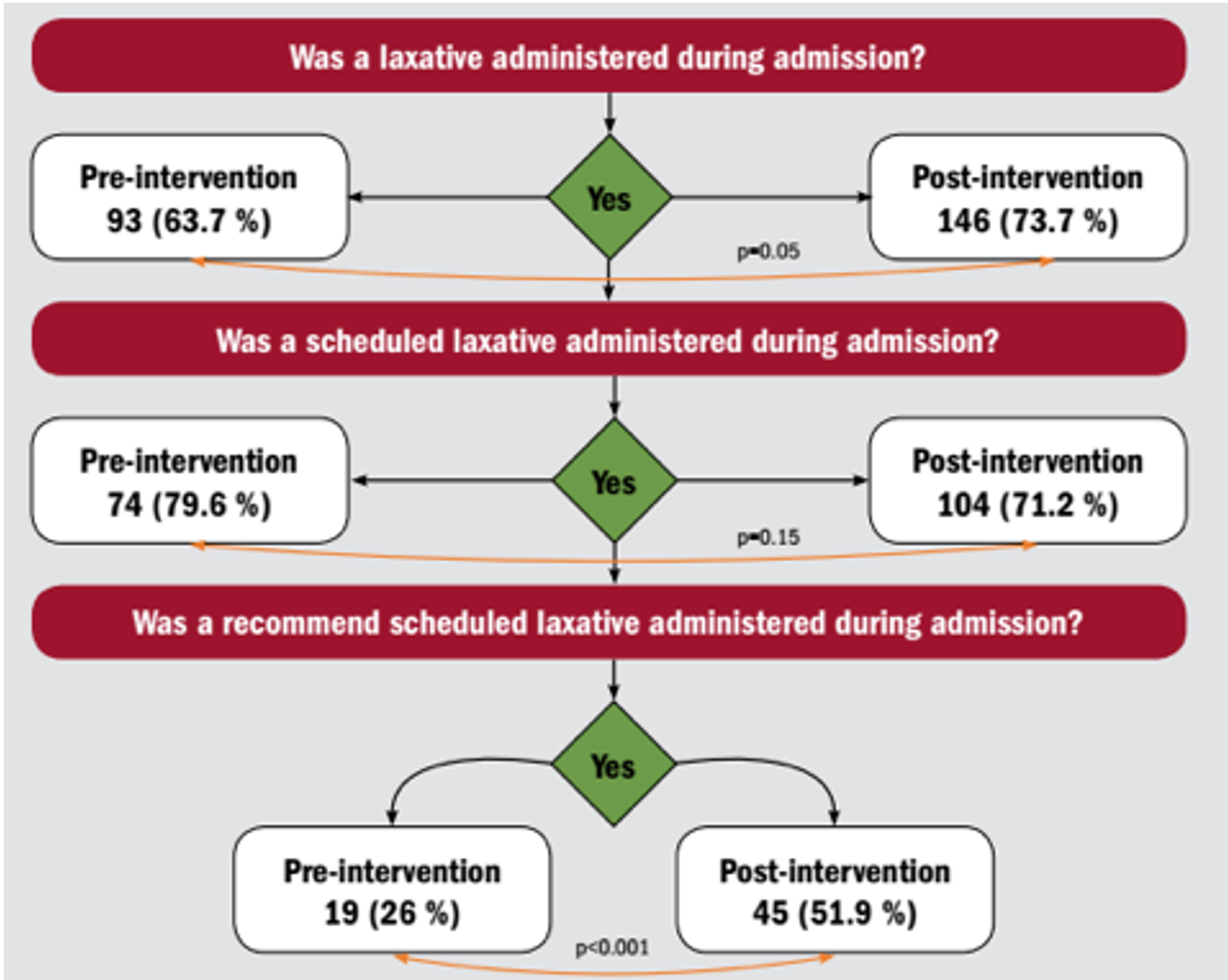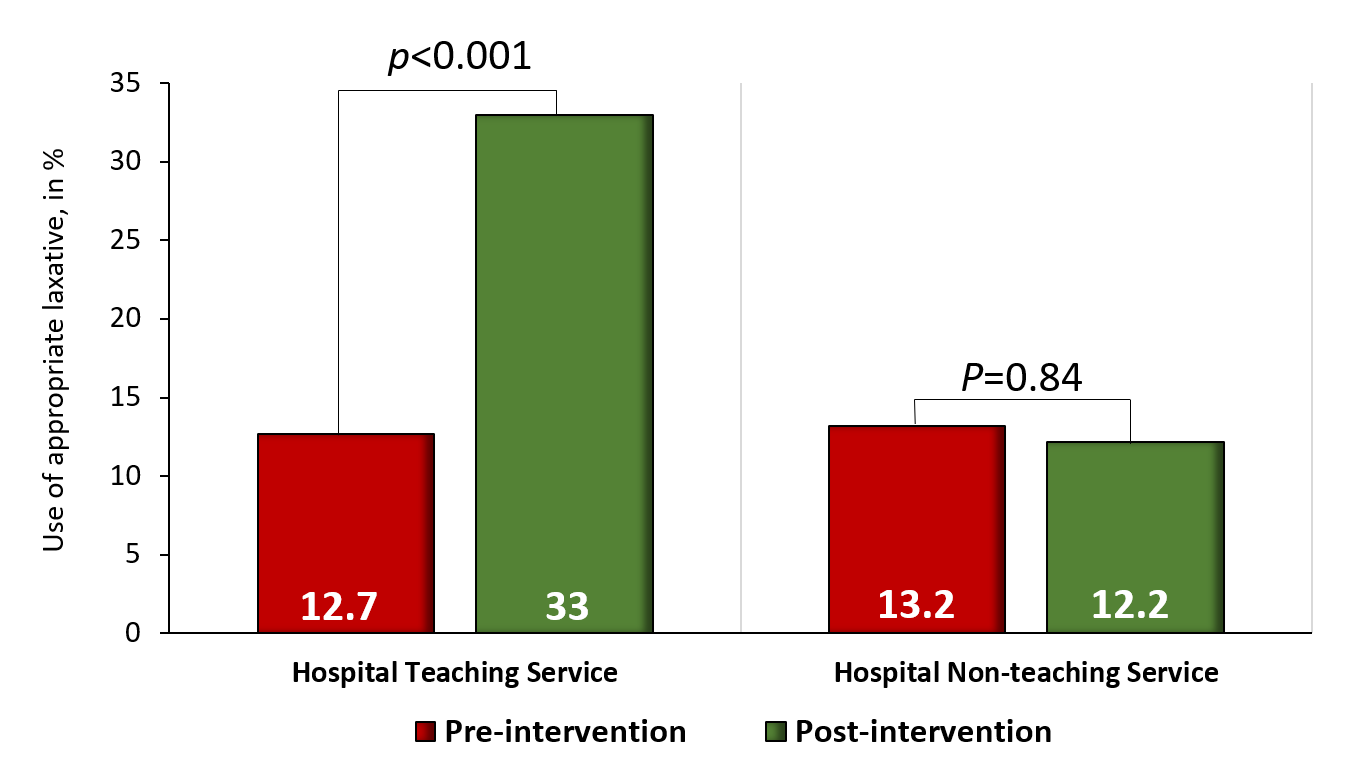Background: Opioids are the most commonly used analgesics for pain management in hospitalized patients. Approximately 40% to 81% of patient on opioid analgesics experience opioid induced constipation (OIC) which is associated with significant patient discomfort. Prophylactic scheduled laxative therapy is recommended to prevent OIC. The purpose of this study was to improve appropriate use of laxatives to prevent OIC.
Methods: We conducted a retrospective study on patients admitted to the medical floor who received any type of opioid analgesics for at least two days, from October 2016 to August 2017. Patients on surgical, CVICU, Ob/Gyn, and emergency department were excluded. After completion of pre-intervention data collection, a 5-week educational intervention was conducted for the physicians taking care of patients in teaching service. Post-intervention data was collected and analyzed using appropriate statistical tools.
Results: In all, 146 and 198 qualified patients were included, before and after the intervention, respectively. Patients characteristics were similar in both pre- and post-intervention period. The most common reason for narcotic analgesic use was pain due to musculoskeletal etiology. Although marginally significant, educational intervention resulted in 10% improvement in the overall (scheduled or PRN) use of laxatives (p=0.05). However, no significant difference was observed in the proportion of patients who received scheduled laxatives between pre-and post-intervention groups. Among patients who received scheduled laxatives, there was about 25% improvement in administration of the recommended laxative (Senna or Bisacodyl) after the intervention (58.1% vs 82.7%) (p<0.001). There was a significant improvement in the administration of the recommended laxative among patients admitted to the teaching service (intervention group), compared to non-teaching service (81.4% vs 18.6%) (p<0.001).
Conclusions: An appropriately designed physician education program is effective in improving proper prophylactic use of laxative for patients taking opioid analgesics to prevent OIC. Ongoing educational program is required to sustain the improvement.


